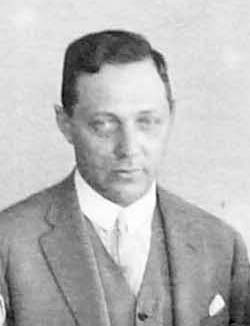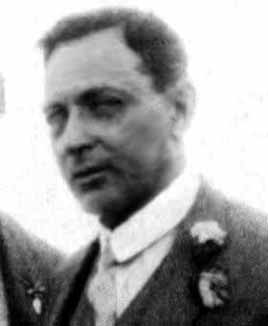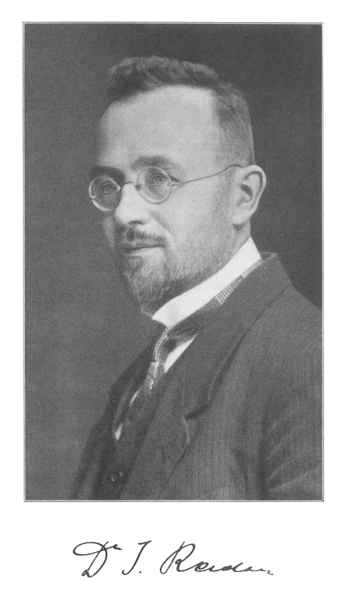<Back to Index>
- Mathematician Alfréd Haar, 1885
- Mathematician Johann Karl August Radon, 1887
PAGE SPONSOR


Alfréd Haar (Hungarian: Haar Alfréd; October 11, 1885, Budapest – March 16, 1933, Szeged) was a Jewish Hungarian mathematician. In 1904 he began to study at the University of Göttingen. His doctorate was supervised by David Hilbert. The Haar measure, Haar wavelet and Haar transform are named in his honor. Together with Frigyes Riesz, he made the University of Szeged a center of mathematics. He also founded the Acta Scientiarum Mathematicarum magazine together with Riesz.
He was born in Budapest on 11 October 1885 to Hungarian Jewish parents Ignác Haar and Emma Fuchs. He graduated in 1903 from the secondary school Fasori Evangélikus Gimnázium where he was a student of Rátz László. He started his university studies in Budapest, later moving on to Göttingen reading Mathematics and sciences. Among the many famous professors he was taught by, he could count Eötvös Loránd, Kürschák, Carathéodory, Hilbert, Klein and Zermelo.
During his years of the secondary school, he collaborated with the mathematical journal for secondary school students Középiskolai Matematikai Lapok, and won the national Eötvös Loránd Mathematical Competition. He enrolled to the Technical University of Budapest as a student of Chemical Engineering, but in the same year he moved on to the University of Budapest, and after a year to the University of Göttingen. His doctoral research was supervised by Hilbert graduating in June 1909. His 49 page thesis studies systems of Sturm - Liouville functions and spherical functions, introducing the ever since widely used Haar orthogonal systems. In the same year he habilitated to become a private professor of the university.
In 1902, the University of Kolozsvár (Cluj) invited him along with Farkas Gyula Riesz Frigyes to become a professor, and he became the professor of 'Quatitics'. A number of his lecture notes from the time became established books later. After the Treaty of Trianon, which ceded Transylvania to Romania, the university had to move to Szeged, the closest city within the new boundaries, where he with Riesz established the Center of Mathematics, and the first internationally recognized Hungarian mathematical journal, the Acta Scientiarum Mathematicarum.
He died of stomach cancer on 16 March 1933.
His results are in the fields of mathematical analysis and topological groups, in particular he researched orthogonal systems of functions, singular integrals, analytic functions, partial differential equations, set theory, function approximation and calculus of variations.


Johann Karl August Radon (16 December 1887 – 25 May 1956) was an Austrian mathematician. His doctoral dissertation was on calculus of variations (in 1910, at the University of Vienna).
Radon was born in Tetschen, Bohemia, Austria - Hungary, now Děčín, Czech Republic. He received his doctoral degree at the University of Vienna in 1910. He spent the winter semester 1910 - 11 at the University of Göttingen, then he was an assistant at the Deutsche Technische Hochschule Brünn (Brno), and from 1912 to 1919 at the Technical University of Vienna. In 1913 - 14, he passed his habilitation at the University of Vienna. Due to his near - sightedness, he was exempt from the draft during wartime.
In 1919, he was called to become Professor extraordinarius at the newly founded University of Hamburg; in 1922, he became Professor ordinarius at the University of Greifswald, and in 1925 at the University of Erlangen. Then he was Ordinarius at the University of Breslau from 1928 to 1945.
After a short stay at the University of Innsbruck he became Ordinarius at the Institute of Mathematics of the University of Vienna on 1 October 1946. In 1954 - 55, he was rector of the University of Vienna.
In 1939, Radon became corresponding member of the Austrian Academy of Sciences, and in 1947, he became a member. From 1952 to 1956, he was Secretary of the Class of Mathematics and Science of this Academy. From 1948 to 1950, he was president of the Austrian Mathematical Society.
Johann Radon married Maria Rigele, a secondary school teacher, in 1916. They had three sons who died young or very young. Their daughter Brigitte, born in 1924, obtained a Ph.D. in mathematics at the University of Innsbruck and married the Austrian mathematician Erich Bukovics in 1950.
Radon, as Curt C. Christian described him in 1987 at the occasion of the unveiling of his brass bust at the University of Vienna, was a friendly, good natured man, highly esteemed by students and colleagues alike, a noble personality. He did make the impression of a quiet scholar, but he was also sociable and willing to celebrate. He loved music, and he played music with friends at home, being an excellent violinist himself, and a good singer. His love for classical literature lasted through all his life.
In 2003, the Austrian Academy of Sciences founded an Institute for Computational and Applied Mathematics and named it after Johann Radon.
Radon is known for a number of lasting contributions, including:
- his part in the Radon – Nikodym theorem;
- the Radon measure concept of measure as linear functional;
- the Radon transform, in integral geometry, based on integration over hyperplanes — with application to tomography for scanners (see tomographic reconstruction);
- Radon's theorem, that d + 2 points in d dimensions may always be partitioned into two subsets with intersecting convex hulls
- the Radon - Hurwitz numbers.
- He is possibly the first to make use of the so called Radon - Riesz property.